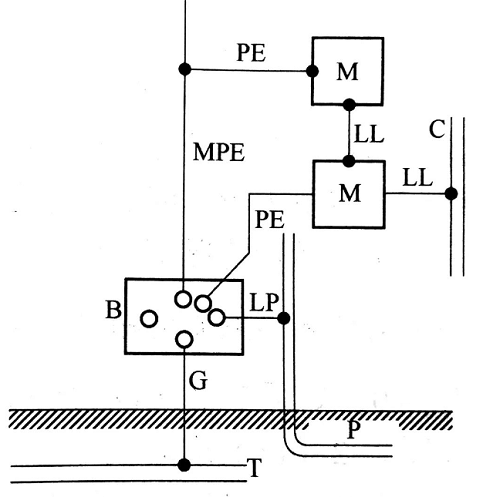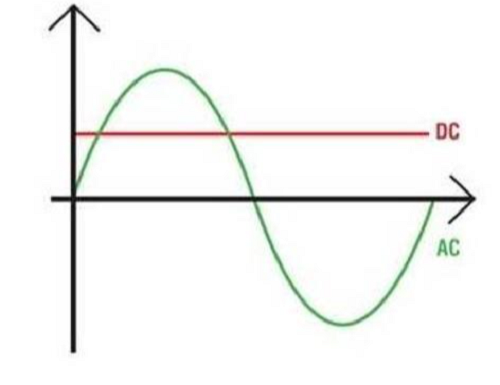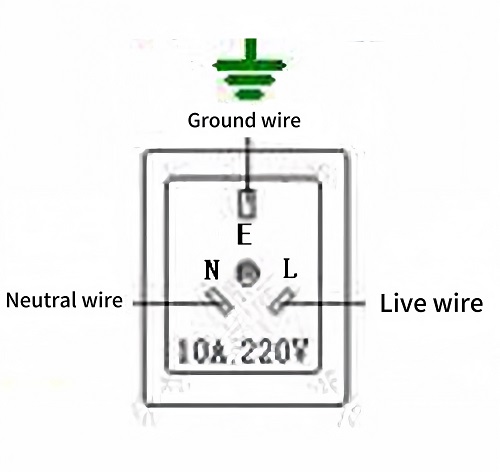What is GND in the circuit?
In Exploring Electronic Circuits, understand the concept of GND (ground) and its multiple roles in circuit design. GND, as a basic element in electronic circuits, not only provides the reference potential point of the circuit but also plays an important role in the performance, stability, and safety of the circuit. From the basic safety protection of household appliances to advanced applications in complex electronic equipment, the role and implementation of GND are presented in many aspects and their complexity. This article aims to provide an in-depth discussion of the different types of GND, how they work, and their importance in circuit design to provide a comprehensive perspective on understanding this critical circuit component.
Table of contents
1. The meaning of GND
2 The role of GND and its key position in electrical safety
3. Technical in-depth analysis of GND in circuits
4. Classification of GND
4.1 Analog ground AGND
4.2 digital ground DGND
4.3 Power ground PGND
4.4 Power ground GND
4.5 Exchange place CGND
4.6 Ground EGND
5. GND working principle and its complexity in electronic circuit design
6. Summary of this article
1. The meaning of GND.
What is GND (ground)?
GND is the abbreviation for ground. GND stands for ground or 0 wire.
Ground can also refer to the earth, which is not a true ground but an assumed ground for application purposes. Connects electrical equipment to the ground to prevent the user from being exposed to high voltages.

Various 'grounds' in the circuit
2. The role of GND and its key position in electrical safety
Grounding is a core safety feature of electrical systems. Its main purpose is to ensure the safe operation of electrical equipment, especially those with metal bodies, such as household refrigerators, washing machines, or ovens. By design, the body of these devices should not be live. However, in actual use, the fuselage may be accidentally charged due to internal faults such as aging or damage to insulation materials. If the equipment is not grounded, the live body will directly cause the risk of electric shock when touching the equipment. To prevent this, connecting the equipment body to the ground via a dedicated ground conductor ensures that any misdirected current is safely directed to the ground rather than through the human body touching the equipment. The composition of the grounding of electrical equipment is shown in the figure below.

The composition of electrical equipment grounding
On a technical level, grounding typically relies on a physical connection to a ground wire or ground rod. One end of these ground wires is connected to a metal part of the equipment, and the other end is connected to the building's grounding system or is buried directly underground. This connection method effectively creates a safe path so that in the event of an internal fault, any leaked current is effectively directed to the ground, thus avoiding the risk of electric shock.
In some high-risk environments, in addition to its basic safety role, grounding may also be used in conjunction with other safety devices, such as leakage current devices (RCDs). The function of these devices is to monitor whether the current flowing into and out of the device is balanced. If an imbalance is detected (indicating that the current may be flowing through other abnormal paths, such as the human body), the device will immediately cut off the power to prevent electric shock.
In special electrical equipment, grounding plays a more varied role, such as in medical equipment or high-precision laboratory equipment, where it is used not only for the protection of personnel but also to ensure the accurate operation of the equipment and to prevent electromagnetic interference. In such cases, the design and implementation of earthing needs to be more precise and complex to meet specific safety and functional requirements.
3. Technical in-depth analysis of GND (ground) in circuits
GND plays a very important role in electronic circuit design. Its role can be analyzed in depth from the following technical dimensions:
One is to provide a reference potential. GND usually provides the common reference potential point in a circuit. All voltages in a circuit are measured relative to GND, which means that the GND point is defined as the zero voltage point. A common reference potential point ensures correct voltage levels between circuit components and accurate signal transmission.
The second is the formation of current loop paths. In any circuit, the current must have a complete loop path to accomplish proper operation. GND provides the path for current to flow from the power supply to the load portion of the circuit (e.g., transistor, resistor, etc.) and then back to the power supply through GND, forming a complete current loop path.
The third is electromagnetic interference (EMI) shielding. The most important role of GND in circuit design is to reduce external interference, especially EMI. By grounding the sensitive portion of the circuit, the interfering signals can be effectively shunted to the ground, thus protecting the circuit from EMI.
The fourth is to improve the performance and stability of the circuit. A good grounding design can significantly improve the overall performance and stability of the circuit. Using a star ground or multi-point grounding strategy can minimize the potential differences caused by ground wires, thereby reducing noise and distortion in the signal path. For example, in high-speed digital circuits, correct grounding methods can reduce signal reflections and crosstalk, thereby improving signal integrity.
The fifth is the security protection mechanism. In the event of a fault condition, such as a short circuit or damaged equipment, GND provides a safe path for the current to discharge. This helps quickly shunt excess current, preventing electrical fires or equipment damage. In addition, grounding helps ensure operator safety and prevents the risk of electric shock due to equipment failure.
Through the above analysis, we can see that GND is not only a basic element in electronic circuit design but also the key to maintaining circuit performance, stability, and safety. During the design process, different types of circuits have different requirements for GND. Therefore, engineers must carefully consider the grounding strategy to ensure the optimization and safety of the circuit design. Whether in simple circuit design or complex system integration, a reasonable grounding strategy is the basis for achieving efficient, reliable, and safe electronic products.
4. Classification of GND
Analog ground AGND is mainly used in analog circuits, especially in applications involving weak analog signals, such as ADC acquisition circuits and operational amplifier circuits. In such circuits, due to the sensitivity and weakness of analog signals, they are extremely susceptible to large current interference from other circuits. Without a dedicated AGND, these large currents may produce significant voltage drops in analog circuits, causing signal distortion and even circuit failure in severe cases. Therefore, the presence of AGND is significant to maintain the integrity and accuracy of analog signals.
Digital ground DGND is different from analog ground AGND, especially in applications in digital circuits, such as key detection circuits, USB communication circuits, and microcontroller circuits. A core characteristic of digital circuits is that the signals they process are discrete, meaning that the signal changes between only two states, usually identified as a digital "0" and a digital "1." As shown below.

Digital circuit processing
These states correspond to different voltage levels, usually "0" represents a low level, and "1" represents a high level. Rapid changes in voltage occur when a digital circuit switches from a "0" state to a "1" state or vice versa. These changes involve not only the voltage itself but also the accompanying changes in current. According to Maxwell's electromagnetic theory, changes in this current generate a changing magnetic field around it, which in turn creates electromagnetic interference (EMI), which can cause interference to other components in the circuit or to adjacent circuits. To reduce the impact of this electromagnetic interference on the overall performance of the circuit, designers usually use an independent digital ground DGND. Compared with analog ground (AGND), DGND is specially designed for digital circuits to provide a stable reference point and effectively isolate electromagnetic interference generated by digital signals. This helps reduce the overall noise level of the circuit, thereby improving signal integrity and circuit reliability.
In complex circuit systems, especially those that contain both analog and digital parts, it is important to distinguish between DGND and AGND. Since analog signals are more sensitive to noise, separating DGND and AGND can ensure that the analog part is not affected by electromagnetic interference caused by digital signal switching. During the circuit board (PCB) design and layout process, the placement of DGNDs needs to be carefully considered to avoid forming loops, which can cause current loop interference. Properly placed DGNDs help optimize signal integrity and reduce radiated and conducted interference.
In our lives, circuits will be divided into low-power circuits and high-power circuits. The analog ground AGND or digital ground DGND mentioned above are low-power circuits. For these high-power circuits such as motor drive circuits, solenoid valve drive circuits, etc., there is also a special reference ground called the power ground PGND. In high-power circuits, the magnitude and variation of the current have a more pronounced effect on the grounding system than in low-power circuits. Therefore, compared to the low-power analog ground AGND or the digital ground DGND, the power ground PGND can be said to be specially designed to handle these high currents and ensure circuit stability.
In these high-power circuits, the significant increase in current can easily result in ground offset between different functional circuits. This shift occurs when the ground reference point (GND) experiences a voltage drop due to high current passage. For example, suppose a circuit is designed that requires a stabilized voltage of 5V, but due to an offset in the ground. In that case, the GND reference point may rise from 0V to 1V, which will cause the actual voltage to drop to 4V (5V-1V = 4V), thus affecting the overall performance and reliability of the circuit. Therefore, when designing high-power circuits, special attention needs to be paid to the layout and implementation of PGND. Proper PGND design can minimize the effects of ground offset and ensure the stability of the power supply. Try using thicker wires, dedicated grounding layers, or designing multiple grounding points to spread out the current, thus reducing the voltage drop at a single point.
In addition, PGND also helps reduce electromagnetic interference (EMI) caused by high currents. By providing a stable ground reference, PGND helps reduce noise and interference in circuits, especially in applications where electromagnetic compatibility (EMC) is a special consideration.
Analog ground AGND, digital ground DGND, and power ground PGND all belong to the category of DC ground GND. These different types of grounds eventually come together to form the 0V reference ground for the entire circuit, which is the power ground GND. The voltage and current of all circuits originate from the power supply. Therefore, the GND of the power supply becomes the foundation and starting point of all circuits. This explains why different types of grounds ultimately need to be brought together to the power ground GND to ensure the overall consistency and stability of the circuit.
AC ground CGND usually appears in circuit projects containing AC power sources, such as AC-DC in the figure below. In these circuits, since the front part of the circuit is the AC part and the back part is converted to DC, two different ground points are inevitably formed: one for the AC part and the other for the DC part. To ensure the consistency of the circuit, engineers usually connect the two ground points through a coupling capacitor or inductor to unify the AC ground and DC ground.

DC and AC
Human body safety voltage is generally considered to be a voltage lower than 36V. When voltage exceeds this threshold, it may cause harm if applied to a human body. Therefore, when designing high-voltage and high-current circuits, engineers often implement EGND to enhance safety. This is common in circuits of household appliances such as fans, refrigerators, and televisions. A socket with ground EGND protection is shown in the figure below.

Socket with ground EGND protection
220V AC only requires live and neutral wires. Why do household appliance sockets have 3 terminals?
Normally, a 220V AC power supply requires only two wires: a hot wire (hot wire) and a neutral wire (neutral wire). Sockets for household appliances usually include a third terminal, the earth ground wire EGND. The addition of this third terminal, although it does not participate in the main function of the circuit, provides critical safety protection. When a fault occurs inside the electrical appliance, such as insulation damage causing the body to become electrified, it provides a safe escape path for current. This way, any misdirected current is directed to the ground rather than through the human body touching the device, greatly reducing the risk of electric shock. Therefore, there is a clear difference in circuit meaning between EGND and other types of ground wires GND. EGND is not directly involved in the main function of the circuit. Specifically designed to enhance safety, it connects to the earth to provide a stable ground reference point and conducts electricity during abnormal conditions to protect equipment and users from high voltages.
The application of EGND in circuit design is not limited to household appliances. EGND is a necessary safety measure in any circuit design involving high voltage or current. It helps ensure that operational safety is maintained even in the event of equipment failure or other unusual circumstances.
5. GND working principle and its complexity in electronic circuit design
In electronic circuit design, the concept of ground wire GND seems simple, but it contains a variety of different functions and classifications, which makes a seemingly simple circuit problem quite complicated. So, why are there so many subdivisions of GND grounding functions? Generally speaking, when engineers design circuits, they often name all GND ground wires simply as GND and do not distinguish them in the schematic design. Although this approach is simple in operation, it will cause a series of problems, especially in the PCB wiring stage, where it is difficult to effectively identify and handle the GND ground wires of different circuit functions.
Regarding the issue of signal crosstalk, when GNDs of different functions are directly connected, especially when the GND of a high-power circuit is mixed with the GND of a low-power circuit, it may have an impact on the 0V reference point of the low-power circuit. Such a wiring method can easily cause signal crosstalk between different circuits, thus affecting the performance of the circuit. For example, in a system containing high-speed digital circuits and precision analog circuits, if the same GND is shared, high-frequency switching operations in the digital circuits may cause significant voltage fluctuations on the shared GND path. These fluctuations propagate through the GND path, affecting the performance of analog circuits. Therefore, it is ideal to use separate GND planes or traces to reduce this mutual interference.
When designing more complex circuit systems, the management of GND becomes more complex. For example, in a circuit system project that includes both analog and digital subsystems, when the AGND of an analog circuit is connected to the CGND of an AC power supply, the stability of the AGND may be affected by periodic changes in the CGND. The voltage at CGND of the AC power supply fluctuates periodically, while the DC ground GND generally remains constant at 0V. This fluctuation may propagate to the analog circuit, causing deviations in the reference voltage. To avoid this, a common approach is to use isolation techniques or to use a separate AGND plane to ensure signal precision and accuracy.
Electromagnetic compatibility (EMC) is an important consideration in circuit design, and the layout of the GND also has a significant impact on EMC. When the GNDs of different circuits are connected, the circuit with the stronger signal may directly interfere with the circuit with the weaker signal. This interference may cause the circuit with the weaker signal to become a source of electromagnetic radiation from a stronger external source, making EMC handling of the circuit more difficult. If you are concerned about this type of problem, consider techniques such as filtering, shielding, and dedicated GND alignments during design to minimize the occurrence of such interference situations.

EMC Filter
Finally, the fewer signal connections between circuit systems, the greater their ability to operate independently. On the contrary, the more signal connections there are, the weaker the ability of each circuit system to work independently. If the ground wires of circuits with different functions are connected, it is equivalent to adding a potential interference link between the circuits, which may reduce the overall reliability of the circuit. For example, if there is no intersection between two circuit systems A and B, the functionality of system A will not affect the normal operation of system B, and vice versa. But if the ground wires of these systems are mixed, unnecessary interference may be introduced, affecting the stability and reliability of the circuit.
6. Summary of this article
Overall, the role of GND in electronic circuit design goes far beyond a simple grounding point. From ensuring basic electrical safety to ensuring accurate and stable operation of circuits, the importance of GND cannot be ignored. It's multiple classifications and complex working principles require engineers to adopt sophisticated and thoughtful strategies when designing and implementing circuits. Whether in ordinary electrical appliances in daily life or high-end technology products, a reasonable grounding strategy is the basis for achieving efficient, reliable, and safe electronic products. Therefore, for any project involving electronic circuits, a thorough understanding of GND's characteristics and applications is key to a successful design.